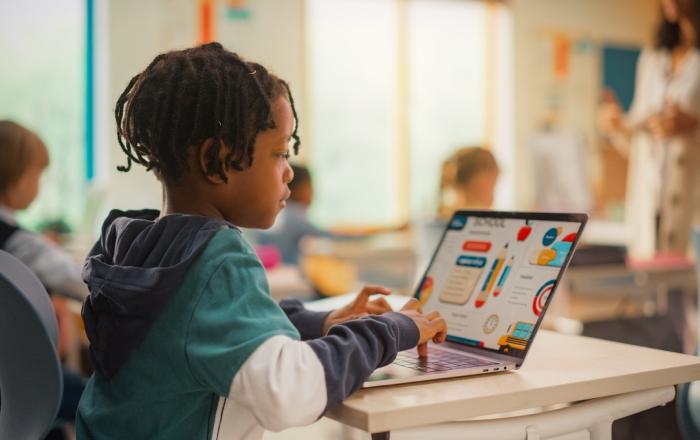Boost Student Engagement: Integrating Gamification into Standard Curricula
Are you looking for a proven method to increase motivation and excitement in the classroom? Integrating gamification into standard curricula is a transformative approach that educators worldwide are harnessing to boost student engagement.In this thorough guide, we’ll explore the concept of gamification in education, dive into its many benefits, and offer practical strategies and real-world examples to help you bring gamified learning to your classroom.
What is Gamification in Education?
Gamification refers to the use of game design elements and principles in non-game contexts,such as education,to enhance participation,motivation,and learning outcomes. This approach taps into students’ natural desire for socializing, achievement, and competition, making lessons more interactive and enjoyable.
Common gamification techniques in education include:
- Points and badges systems for achieving milestones
- Leaderboards to foster healthy competition
- Challenges and quests to encourage exploration and critical thinking
- Instant feedback and rewards
- Storylines or narratives woven into learning modules
Why integrate Gamification into the Standard Curriculum?
Traditional teaching methods frequently enough struggle to maintain student attention and motivation. By enriching your curriculum with gamified elements, you can create a dynamic learning habitat that appeals to digital natives.
Key Benefits of Gamifying the Classroom
- Increased Student Engagement: Interactive challenges and rewards keep students motivated and focused on tasks.
- Enhanced Retention: Active participation helps students absorb and retain information more effectively.
- Personalized Learning: Gamified systems can be tailored to suit different learning styles, abilities, and interests.
- Immediate Feedback: Students can see the results of their actions in real-time, enabling speedy adjustment and deeper understanding.
- Develops Key Skills: Beyond academic knowledge, gamification fosters collaboration, problem-solving, and critical thinking.
Practical Tips for gamifying Your Curriculum
Ready to start boosting student engagement with gamification? Here are actionable steps and classroom-tested ideas for implementing gamified learning strategies:
1. Define Clear Learning Objectives
Identify the skills or knowledge you want students to master. Gamification should serve your pedagogical goals, not distract from them.
2. Introduce Points,Badges,and Leaderboards
- Points Systems: Award points for completing assignments,participating in class,or achieving project milestones.
- Badges: Design digital or physical badges for skills mastered (e.g., “Math Whiz,” “Presentation Pro”).
- Leaderboards: Display top performers in a visible, non-threatening way to motivate all students.
3. Create Missions,Quests,or storylines
Turn lessons into quests where students must solve problems,conduct research,or collaborate as a team to progress through levels. A compelling narrative can make subjects like history, science, or language arts more immersive.
4. Offer Choices and Personalization
- Allow students to select from different types of challenges or assignments based on their strengths.
- Let students set personal goals within the gamified system.
5. Provide Immediate Feedback and Rewards
Quick feedback—like unlocking a new badge or progressing to a new level—reinforces positive behaviors and learning achievements.
6. Foster Collaboration and Social Learning
Incorporate team-based games and collaborative challenges that require peer interaction, encouraging dialog and joint problem-solving.
7. Utilize Technology Tools
take advantage of digital platforms such as Kahoot!, Classcraft, Quizizz, or even educational Minecraft. These tools support gamified learning through quizzes, quests, and digital storytelling.
Real-world Case Studies and Success Stories
Case Study 1: Revolutionizing Math with Points and Badges
A middle school math teacher in Texas incorporated point systems and digital badges into her curriculum.Students earned points for completing homework, solving extra problems, and helping peers. Within one semester, the classroom average test scores increased by 18%, and students reported higher satisfaction with the class.
Case Study 2: gamifying Language Arts with Story Quests
A high school English teacher in the UK designed a “choose Your Own Adventure” reading program. Students navigated through story paths, earning points for literary analysis and participating in discussions. The result? Reading engagement and comprehension soared, with a noticeable increase in classroom participation.
Case Study 3: Social Studies Escape Rooms
An elementary social studies teacher used digital escape rooms built with Google Forms. Teams solved historical puzzles to “break out” of a virtual scenario. Students became more invested in historical topics and developed stronger teamwork skills as an inevitable result.
Overcoming common Challenges in Classroom Gamification
- Time Constraints: Start small with simple game elements before expanding.
- Equity Concerns: Ensure all students have a fair chance to participate and succeed.
- Balancing Competition and Collaboration: Mix individual and team-based rewards to appeal to different personalities.
- Tech Access: Use low-tech alternatives like classroom charts, hand-made badges, and group storytelling when digital resources are limited.
Expert Tips for Sustainable Gamification
- Blend Learning Approaches: Combine gamified strategies with traditional teaching for a well-rounded experiance.
- Celebrate All Progress: Recognize effort and growth, not just top performance.
- Keep It Meaningful: Tie rewards and activities directly to learning objectives.
- Promote Reflection: Encourage students to reflect on what they’ve learned and how they’ve progressed within the gamified system.
- Iterate Ofen: regularly review and update your gamification methods based on feedback and results.
Gamification in Practice: A First-Hand Experience
I once integrated a year-long history quest into my standard curriculum. The class became a group of time travelers, earning badges and equipment (stickers, certificates) as they “unlocked” new periods in history. Engagement soared—not only did attendance improve, but I saw even my quieter students enthusiastically led discussions and volunteer for extra activities. The gamified elements brought excitement and camaraderie, transforming the classroom climate and driving deeper learning.
Conclusion: Unlock the Power of Gamified Learning
Integrating gamification into standard curricula is a powerful way to boost student engagement, motivation, and achievement.By thoughtfully incorporating game elements, clear goals, and student input, you can transform your classroom into a vibrant hub of learning and growth. Start small, build on your successes, and witness the remarkable changes in your students’ enthusiasm and performance!
Ready to level up your classroom? Begin today by adding a single gamified element, such as a points system or classroom quest, and see the difference gamification can make in fostering a more dynamic, engaged, and effective learning environment.

